Grocery Store Shopping
I admit, I don’t enjoy grocery store shopping. There, I said it. I like to take pictures and check on prices so I can generate worthwhile information for my posts, and to make sure I save as much money as possible. Today, I may have to get on my soapbox. We have a series of problems regarding our food supply, my friends. It’s our food chain, the droughts found around the world, the price of gas to deliver the food, food shortages, higher prices, and the list goes on and on.
Today, I want to talk about some food shortages and the higher prices of the food we like to purchase. I must be honest, I miss delicious, thick, center-cut bacon. I refuse to cave to the prices. Luckily, we couldn’t have a garden with fresh tomatoes last year for my BLTs, or I may have had a tantrum at the store while looking at the bacon prices. I’m just kidding, but if I were prone to high blood pressure, it would have gone sky-high.
This is the third time this month that I’ve written about possible food shortages you may experience when shopping now, or in the near future. Some shortages may be somewhat localized, but others will probably be more universal.
My research has taught me that the following items will likely prove harder to get, if not already so in your area. Please read through the information, check out your local stores, and then plan and act according to your family’s food needs and finances when stocking up.
In case you missed these posts, 10 Food Shortages You Need To Stock, or this one, 17 Shocking Things You Didn’t Know About Stocking Food
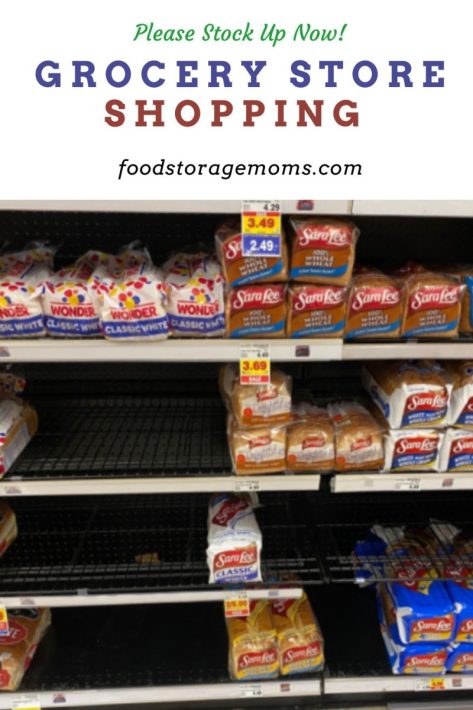
Grocery Store Shopping
1. Pork
Shortly after the virus issue became global, news reports were full of pictures and stories about farmers and ranchers who were having to destroy thousands of animals because so many meat processing plants had closed. The plants simply couldn’t operate with the reduced labor available. In April 2020, Smithfield Foods, the world’s largest pork producer, shut down a plant in Sioux Falls, SD.
At about the same time, Tyson Foods reported having to shut down its pork processing plant in Waterloo, Iowa. The country quickly found itself in a severe pork shortage, and demand quickly dwindled with the closure of so many restaurants.
We’re four years from those tough times, but we still deal with some common issues. One key challenge is getting enough quality labor to support the operation of those plants. Another concern is the cost and availability of food for the animals.
Both drought and floods have affected crops in many parts of the country. Some farmers have debated whether to pay higher food costs for their stock or not to replace it since they may not be able to sell the meat at a price to cover costs, let alone make a profit.
The dilemma is exacerbated by the cost of shipping food to those farmers and the animals to slaughterhouses. Then, there is the cost of shipping the finished meat products to stores nationwide. The high cost of diesel fuel is affecting many industries.
Thank goodness the trends for more products are showing positive signs, according to the Pork Trends report from US Foods. Depending on your location and the types of cuts desired, they are seeing some highs and lows. It could be a while before we see more stability across the pork industry. The local Kroger/Smiths store had their pork tenderloin on sale when Mark visited this week. We were happy to see a “buy one, get one free” sign in the meat aisle and he purchased two three-pound packages we put in our freezer.
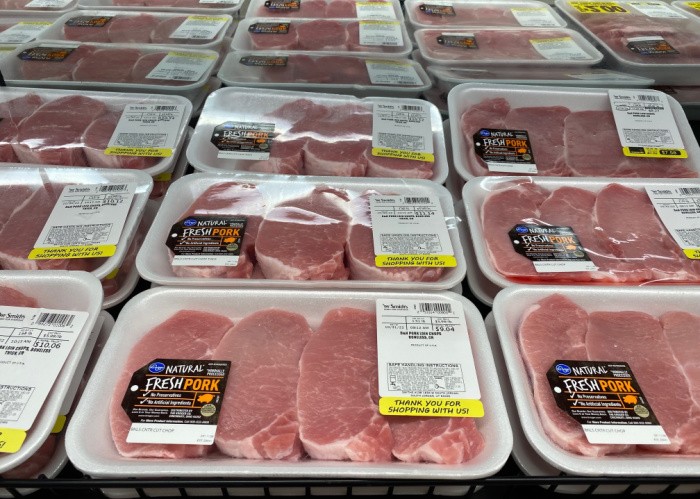
2. Bacon
As discussed above, bacon faces the same challenges as the general pork industry. Still, the additional processing involved in bacon manufacturing adds to the cost and related effects on our regular food systems. I mentioned the impact of severe drought and floods in the pork industry, but other factors play out, too. The reduced availability of fertilizers for their crops and the higher-than-normal fertilizer prices directly affect the cost of agricultural production, including the food for bacon-producing pigs.
I wanted to bring to the attention of my readers, particularly those living in California, the effects of legislation passed in that state. I wasn’t aware that 99% of California pork consumption comes from pork raised and processed outside the state.
Years ago, their legislature passed Proposition 2, which required certain living conditions for birds and animals raised for food production, particularly how much room each one had to move around. More recently, the legislature passed Proposition 12, which took additional steps to protect those birds and animals so there wouldn’t be any cruel treatment.
Prop 12 extends those requirements to out-of-state providers. Meat producers have fought the legislation, but many animal rights groups have pushed very hard to see it implemented. There has been much dialogue about the proposition’s negative economic impacts, not only in California but also in those states where the birds and animals are being raised and processed.
One of the economists who has weighed in on the issue is Lan Hatamiya, the former Secretary of the California Technology, Trade, and Commerce Agency. He issued a White Paper on the matter and indicated he anticipates a 50% reduction in pork supply, which an independent market expert, Rabobank, supports.
Mr. Hatamiya states: “Market access restrictions from Proposition 12 will further limit available supply into California, thereby driving up pork prices for all consumers. The negative financial burden falls largely on the diverse ethnic consumers and communities that make up California, with pork being an important source of protein for African American, Asian American, and Hispanic households, businesses, and restaurants.”
We need to think about those most adversely affected by this legislation, including those on WIC, others experiencing poverty, and those already challenged by acute food insecurity. Nutrition is an issue, as those facing hunger issues need protein consumption levels just like the rest of the population. I’m not sure about the number of people affected, but it seems the legislation sidesteps many social determinants of health.
Some experts expect retailers to increase the price of retail pork by 50%, and the resulting consumer cutbacks in purchases will reduce by multi-millions of what California consumers spend on bird and pork products annually.
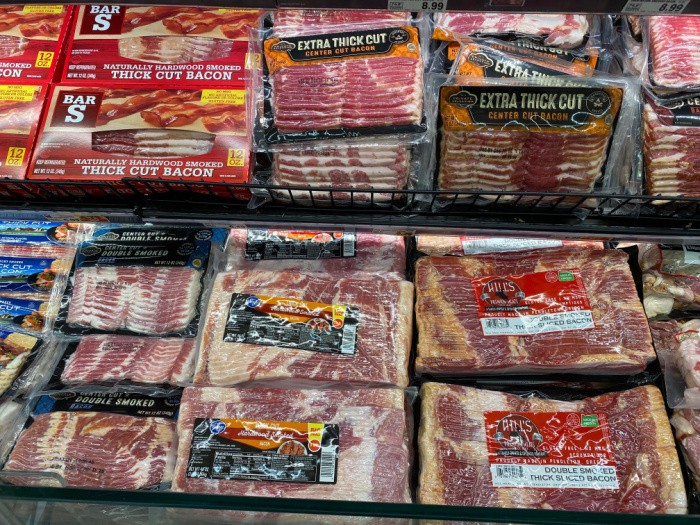
3. Pasta
Pasta, as we know it, is generally made from durum wheat semolina flour and added to a water and salt mixture. The strange thing is that durum wheat has been selling for prices much lower than usual, so the grain isn’t being grown in the quantities seen in years past, with other types of wheat and farm products being grown and harvested in its place.
Due to a shortage of regular pasta, many chefs and restaurants have been forced to substitute other wheat-based versions for their “pasta” entrees and deal with the difference in texture, taste, and consistency.
Those of us at home may not even notice a difference. But if we are purists and want the durum wheat varieties of pasta we’ve enjoyed for years, we’ll have to look for stores that carry those products, with the understanding that we’ll probably pay more for them. Check the stores in your location for availability and buy anything that might go on sale.
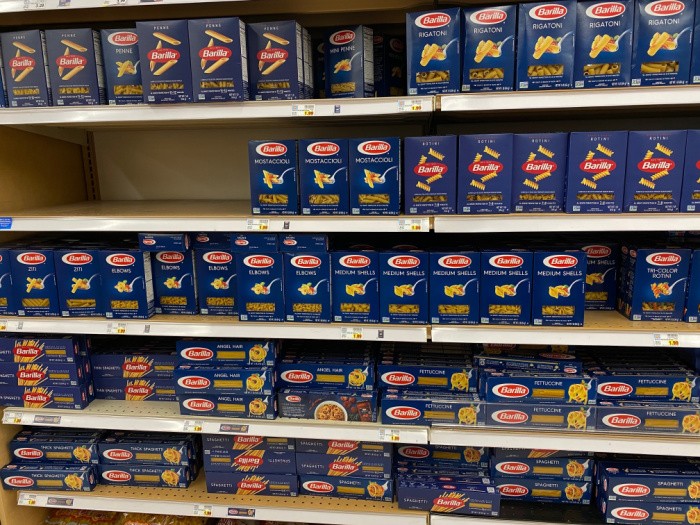
4. Apples
Like other fruits and veggies, apples are grown throughout the U.S., but some states, like Washington, are known for their apple varieties, quality, and high production levels. Also, like other fruits and veggies, climate change and the variations in weather patterns have directly influenced apple production in the past few years.
I recently read an article about a farmer in Versailles, KY, who has had a great apple harvest this past year. But he indicated that other areas of KY haven’t been so lucky. He noted that apples can be a little picky and require a specific set of sun, water, and pollination conditions to succeed. Many areas in the country are experiencing drought, so sufficient water has been a challenge, and it doesn’t look like that will change soon.
We’ve all heard about the challenges to the bee industry in the past few years, too. Disease and insecticides have decimated thousands of bee colonies, making pollination of all crops, including apple trees, hard to accomplish. The bees seem to be returning, but complete production levels may be a few years out.
If you see apples on sale, even if your favorite variety isn’t on display, I’d suggest you buy some so you have what you want for treats over the next few months until the next harvest.
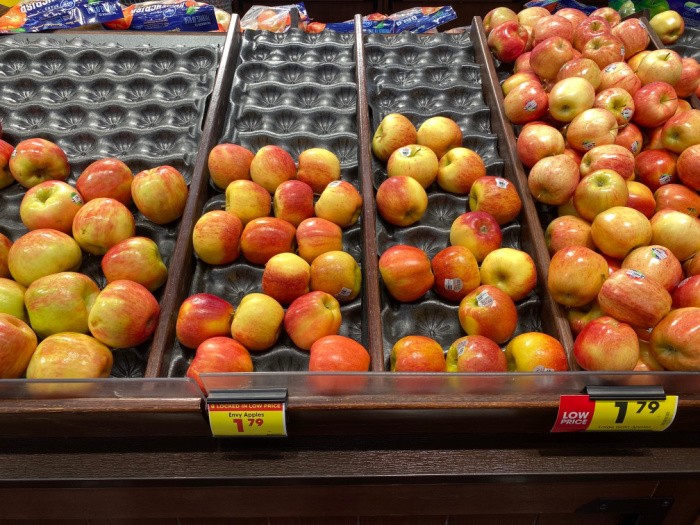
5. Oranges/Lemons
We all love citrus juices to drink and cook with. Most of us realize that much of the citrus production in the U.S. comes from the state of Florida. We’ve seen the devastation in many of the beach areas of western Florida due to Hurricanes Ian and Helene. Still, we may not be aware of the extreme damage to the agricultural areas of Florida, including the trees that grow oranges and lemons based on the freezing temperatures there this winter.
The U.S. Department of Agriculture has reported that crop production due to the severe storms and cold temperatures will plummet to record-low levels this year. Before these weather scenarios, the state already dealt with weak citrus production levels. Florida oranges have long served as feedstock for most orange juice produced in the U.S. That feedstock has been diminished significantly by greening disease in the past few years. The disease can cause the trees to generate fruit that is not only smaller but also less sugar-laden.
With the combination of Hurricane Ian and Helene’s greening disease, the USDA forecasts that 12 million boxes of Florida oranges will be produced during the 2025 growing season, a decrease of 33% forecast in December 2024. That is the lowest production output of oranges since 1943, significantly lower than last year’s already low production level of 41 million boxes.
Add that to the lower production expected from California-based orchards due to the western states’ drought and wildfires, and we are looking at a “perfect storm.”
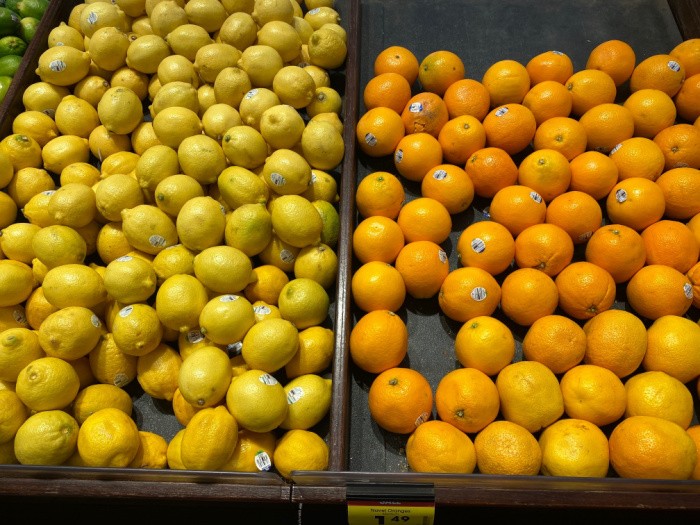
Orange Juice
Two additional considerations that influence the cost and availability of orange juice from a limited orange crop this year will be the cost of the plastic containers the juice comes in and the cost of distribution. Due to supply chain issues, the woes we are all experiencing carry over to packaged food and drink products. We haven’t even covered the cost of labor shortages in all industries. Fewer employees but increased labor costs are affecting companies across the board.
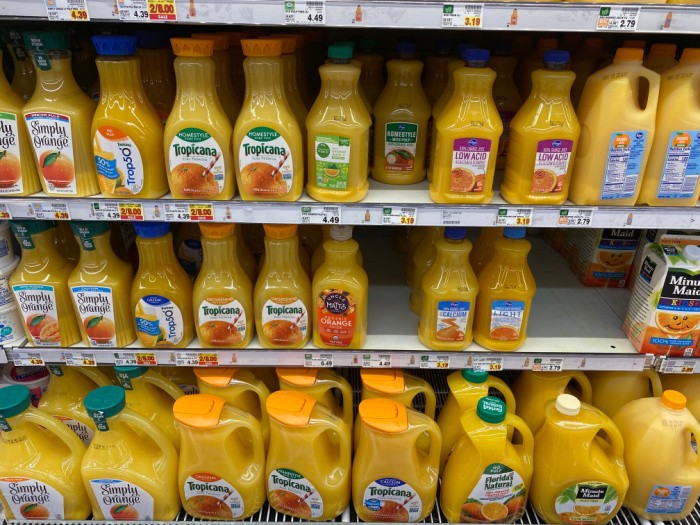
6. Bread
We’ve talked about the increases in the cost to produce many agricultural products due to unfavorable weather conditions, shortfalls in available fertilizer, transportation and fuel costs, labor shortages, and more. The U.S. and other countries had already been seeing challenges in production before the virus issue, but now, with the conflict in Eastern Europe between Russia and Ukraine, those challenges have been compounded.
This is especially the case with wheat production. A year ago, Bloomberg indicated that U.S. government forecasts for global wheat reserves were down to a five-year low, creating a global deficit. Since wheat is considered one of the food “staples,” food price inflation is a given. Higher wheat prices lead to higher flour prices, the key ingredient of bread and bread-related products.
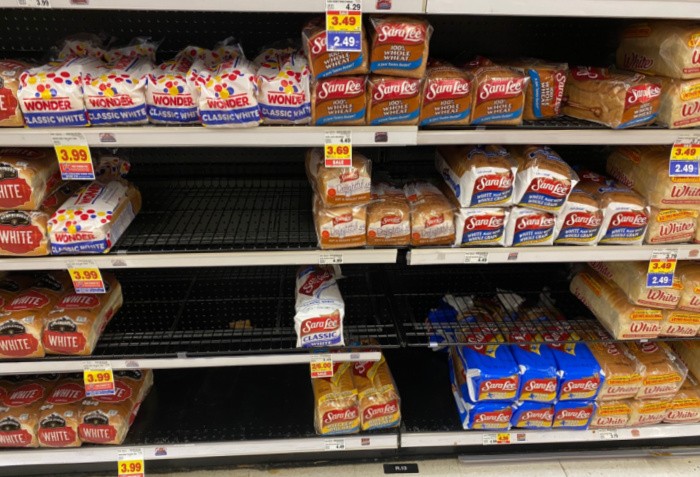
7. Donuts and Other Pastries
Since donuts are made from wheat flour, the same issues apply to them as the ones discussed above regarding bread.
During my research, I found an interesting discussion about shortages of various varieties of donuts at Dunkin’ Donuts locations, particularly in certain eastern states. It related more to the type of glaze or fruit fillings that weren’t available, making the donut run during the holidays a new adventure. Check out the piece on Mashed.com

8. Steak
Many beef shortages and related price increases mirror what we discussed above with the supply of pork products. The shortages were often due to challenges resulting from the widespread virus. Those included layoffs, plant closings, disputes about getting the needed shots, cutbacks in feedstock animals, costs of raising those animals, distribution costs and labor shortages, and more.
Now that we are returning to a more “normal” situation regarding food supplies, costs don’t seem to be coming back in line as we anticipated. One thing that is happening, particularly at this time of year, is an increased demand due to all the holiday cooking, whether at home or with restaurant visits. People try to be more social and get together more often, either with home-centered parties or fancy get-togethers at favorite eating establishments.
One thing I recently heard about was an increase in businesses victimized by cyber-hacking. That was the case at JBS USA, a huge beef processing company headquartered in Greeley, CO. Yes, we all rely on computers every day to accomplish personal and business goals. When those attacks hit a company like JBS USA, it can cause numerous plants to close until their computer systems are up and running again.
If you love beef steaks, consider checking into the availability of buying your meat directly from a local rancher. You might find some savings in price, but you also can often get custom butchering services so the cuts of meat match your size and quality desires
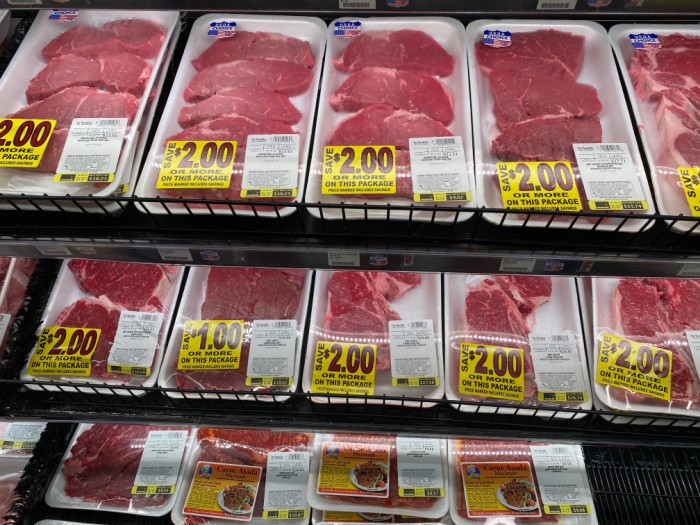
9. Ground Beef
The discussion here would mirror the dialogue above for steak. One aspect of ground beef that adds to the mix is the extra time it takes to process the meat. Yes, ground beef usually doesn’t require the highest-quality cuts, but it does take time to run it through the machinery, adding to labor and equipment expenses.
Again, if you buy from a local rancher, you may be able to get better-quality cuts, which will actually make the ground beef a better per-pound option if you can grind your own.
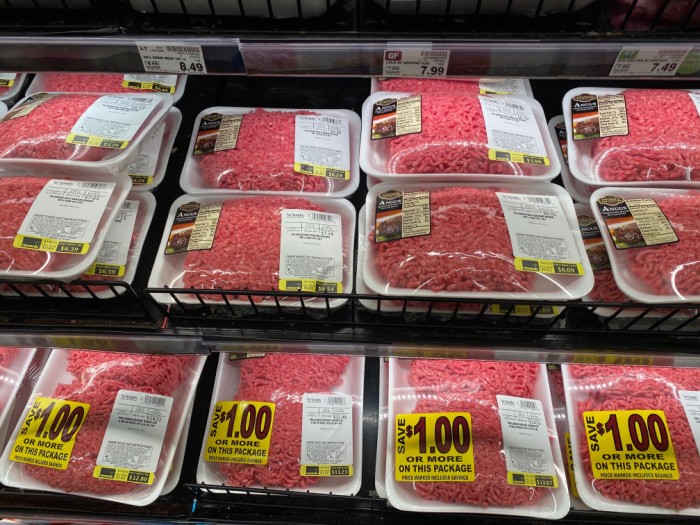
10. Chicken
Much like the issues with pork and beef, market conditions have also affected chicken. Tom Super, who belongs to the National Chicken Council, has indicated that factors like high demand, particularly with more families cooking at home, record expenses in the raising, processing, and distribution of chickens and their food products, and extended labor shortages at the plant level have all influenced the availability and pricing of chicken at the retail level.
Another issue is the slaughter of thousands of chickens due to the bird flu which has also affected the price of eggs.
You’d think we could acquire more chicken products from foreign sources, but the supply chain bottlenecks make that a risky option. I would much rather purchase meat that is raised and processed right here in the USA. I did see a news report tonight that the country of Turkey is currently supplying eggs to the USA. Hopefully, that can help.
Also, the Proposition 12 issues discussed above regarding pork apply to chickens being processed and shipped to California. Don’t be surprised if you see the pricing of all chicken products continue to stay at high levels.
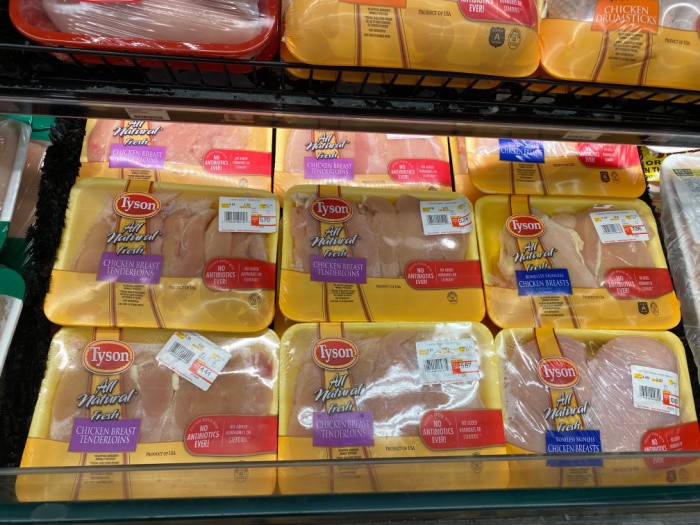
11. Breakfast Cereal
Cereal has proven to be subject to shortages, just like other products tied directly to the agricultural sector. Many kinds of cereal are made from wheat, but other farm products like oats, rice, barley, and corn, also come into play. The recent years have also been filled with labor issues, as illustrated by the strike at Kellogg. That company was able to mitigate some of the shortages until a settlement was negotiated when they went offshore for the needed commodities.
Weather, manufacturing costs, transportation expenses, and local demand for specific cereal types will determine cereal shortages and related product pricing going forward.
Mark went to Walmart early this month and bought close to $100 for a multi-month supply of his favorite cereal brands and flavors. He’s found that from time to time, one product seems to disappear from store shelves. No, he didn’t hoard the cereal. He bought the larger, more expensive packages since the cost per ounce is less. He did see some empty shelves, but all his favorites were available, but maybe at slightly higher prices.
Hopefully, next year’s growing season won’t be adversely affected by the lousy weather patterns we’ve seen in the past few years. Otherwise, it won’t be just cereal found wanting from the farmers’ fields.
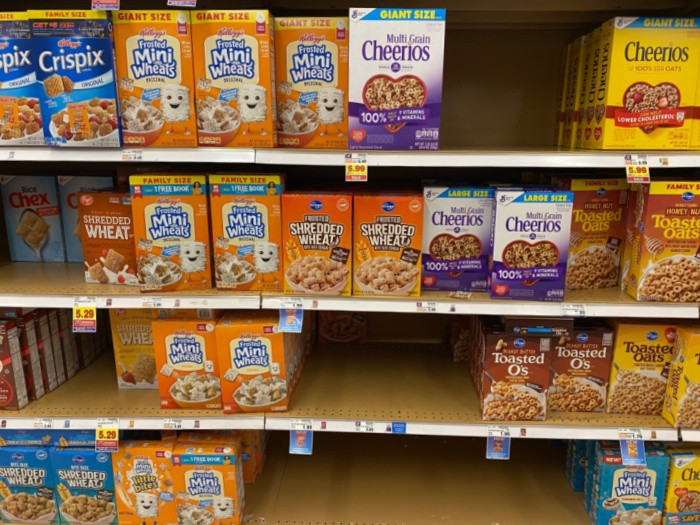
12. Personal Hygiene Products
In an earlier post, we discussed shortages of women’s monthly hygiene products. Additional research has determined that the increasing costs of paper and plastic materials to make and package them have both gone up. Bloomberg reported that tampon prices have gone up 9.8%, and menstrual pad pricing has increased 8.3% over the past year.
Procter & Gamble is one of the primary manufacturers of these products, claiming to have nearly 50% of the market. They haven’t commented about shortages or cost changes but indicated that their demand has significantly increased. They are working to step up production and hope things will stabilize soon.
A spokesperson for Resilinc, a supply chain monitoring company, indicated that there are still challenges with the supply of key materials to make these products. From the effort to find raw materials, getting those products to the manufacturing plants, the workers to run the plants, and then on the trucks for delivery to the stores, each step is seeing issues of cost and availability.
Those of you who are willing to try them might want to consider making reusable menstrual cloth pads that can be washed and reused. They may not be as comfortable or convenient, but they are an alternative that will keep you protected and save you money. Homemade Menstrual Pads
There have been reports of shortages and price increases for personal hygiene products like bars of soap and liquid hand soap. Walmart even posted apologetic signs in many of their stores regarding shortages, even though the shelves where the signs were posted had full shelves.
Apparently, packaging and distribution issues did prompt some concern, but there also appears to have been some increase in purchases as people tried to stock up “just in case.” Another issue is the increased use of these products since we were all asked to wash our hands more often as protection against the virus. Things seem to have stabilized, but you might want extra on hand as a hedge against possible future price increases.
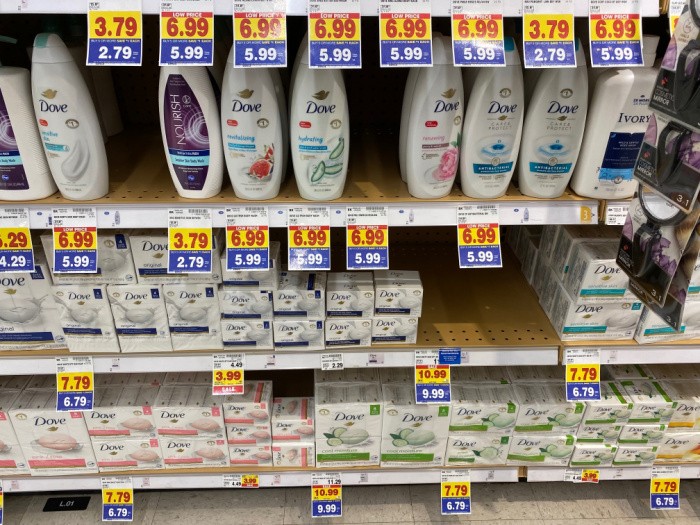
13. Paper Products
Although not as severe, there is still a shortage of paper products. The Phoenix Group of Companies reported that coated and uncoated papers were in short supply at manufacturers, wholesalers, marketing companies, and print shops nationwide. Much of the original shortages were due to lockdowns across the industry and the continued supply chain issues affecting most industries.
Online shopping trends have also added to the shortage challenge. With the increased demand for packaging, many mills have shifted production from regular paper products to paper packaging, cardboard, kraft supplies, and other materials needed by Amazon and other online retail outlets. If you’ve ordered anything of significant size online, you know what I mean.
There have also been some paper mill strikes in countries like Finland, where much of our paper is milled before being shipped to the U.S. The Russia-Ukraine conflict has also contributed to supply chain blockages and increased gas and freight costs to get products to plants and markets.
There has been a recent shift back to regular paper production from some domestic mills that had moved towards packaging production, but that will take some time. Many mills are still reluctant to make any major changes in either direction due to the enormous cost of machinery required to support such a move. Over the next few months, we’ll see how well new production sources come online to support the demand for paper products of all kinds.
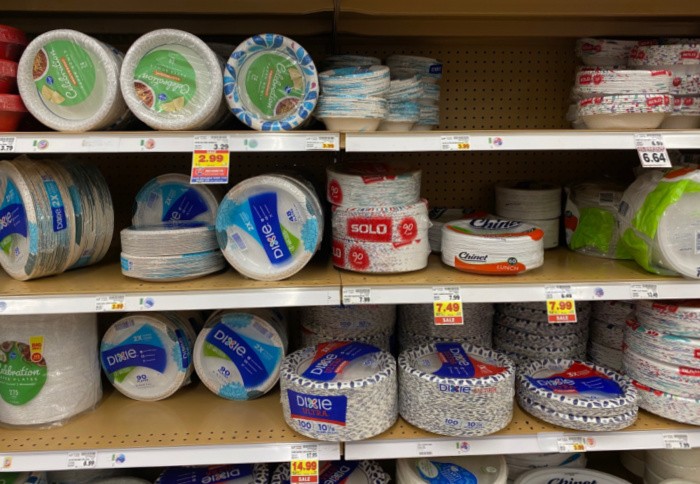
14. Yogurt
In another recent post, we discussed the possible shortage of many dairy products. Those shortages are partly due to the shift from dairy production prompted by many consumers moving away from dairy to more fruits and veggies, a drop in plant production. Add to that the increased cost to produce dairy products, the cost of feed for the cows, the cost of labor to draw workers back into the workforce, the cost of transportation of the milk to processing sites and then to retailers, and more.
An additional challenge to the mix, particularly regarding yogurt, is the fruit generally added to the yogurt for flavor, color, and nutritional value. As mentioned, many fruits will be hard to supply because of weather challenges that may stem from floods, drought, or extreme heat and cold from climate change.
Add to that the challenges of acquiring the raw materials for plastic containers and other packaging materials, the distribution channel bottlenecks, labor shortages, and other market forces that make for smooth processes from farm to table.
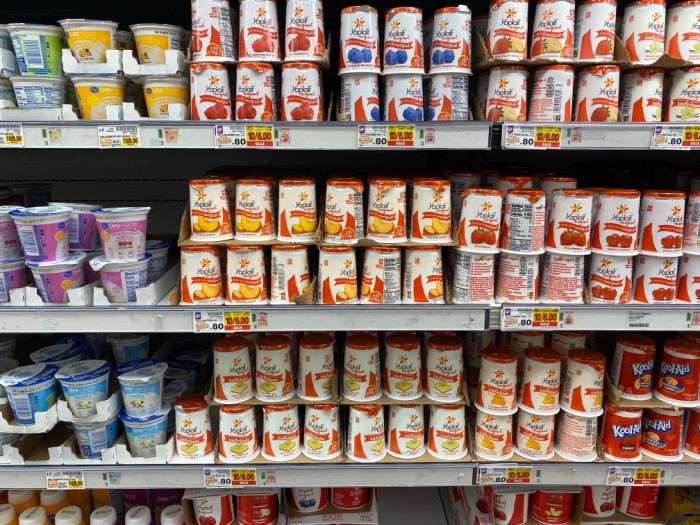
Other Things to Consider to Help With Your Grocery Shopping
- Shoppers need to consider buying store brands with their own private label products rather than name brands to save money. Mark loves the Kroger 6 oz Carbmaster yogurt varieties. They are cheaper than the big-name brands, yet have plenty of protein, few calories, and taste great.
- Although you may have to purchase “bulk” sized packaged items, we’ve found we save on our grocery budget on many products at both Costco and Sam’s Club. Yes, there are membership fees, but over the year we feel we save more than enough to cover the fees.
- If you sign up on your local stores’ loyalty programs you can lower your grocery bill when trying to fill your pantry. They also come with rewards that can save on the purchase of gas at their store-owned gas stations. They also may send you discount coupons, making the items in your shopping cart some of the best deals around. If you go the next step and register for digital coupons on your phone, you can save even more money and you’re less likely to make those impulse buys and steer clear of expensive items you may be tempted to buy.
- Trader Joe’s recently opened a store fairly close. We’ve found them to be one of the cheapest grocery stores, even though they may not have the wide-ranging inventory choices you’re used to.
Final Word
I’m sure we’re tired of hearing about the shortages of so many products we take for granted. Many markets and world events have come together to cause the shortages, so it’s hard to estimate when we may see things at a level we feel more comfortable with.
Shortages are frustrating, but the current costs for things of all kinds are making it hard for millions of families to make ends meet while trying to provide a healthy and safe environment for members of each household. When I shop with Mark, I don’t know how young families with kids can provide the necessities of life with the cost of living where it is right now. Hunger can be a scary prospect if funds are limited, particularly if we have young kids and infants.
I’ve always suggested to my readers that they should consider a garden to at least help offset the high cost of fresh vegetables we all love to eat. We should also have a plan to stock up on food, water, and other critical things to better survive during trying times. My favorite place to buy my garden seeds is SeedsNow. I highly recommend you stock quality seeds and learn to save them for the following year.
Thanks for your continued support by visiting my site and reading my posts. Let me know if you’ve experienced any shortages or unexpected price increases I haven’t outlined so I can pass that info on to others. May God bless this world. Linda


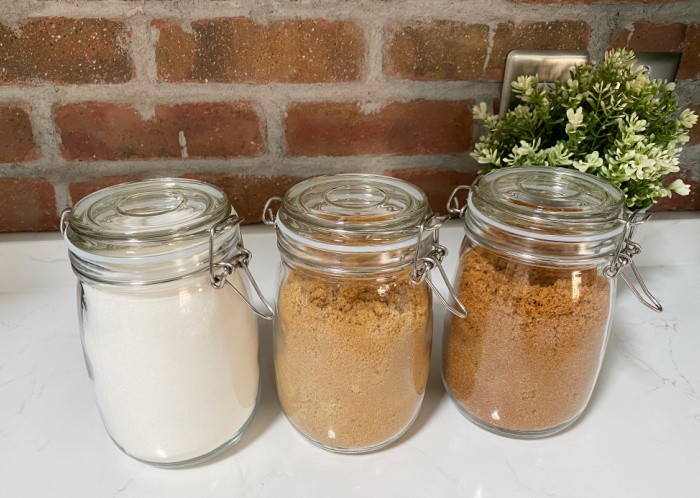
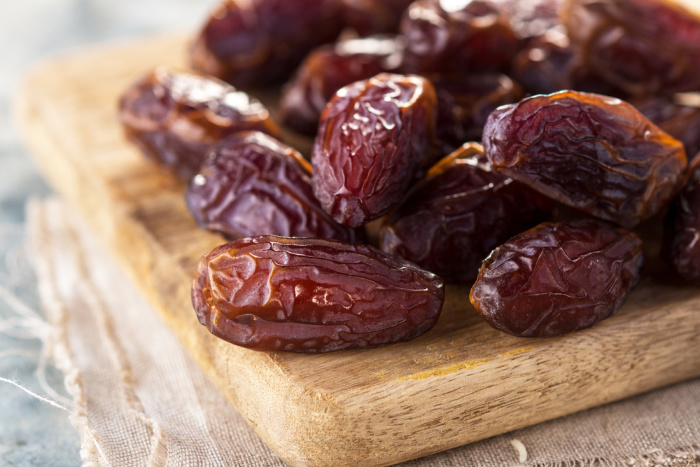

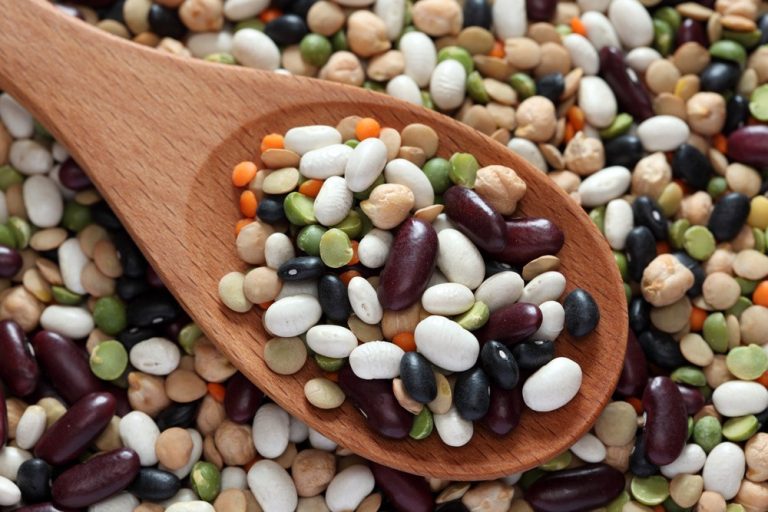
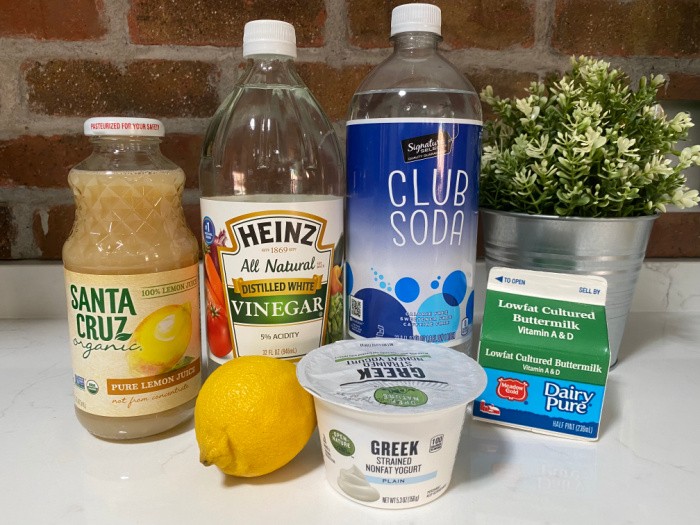
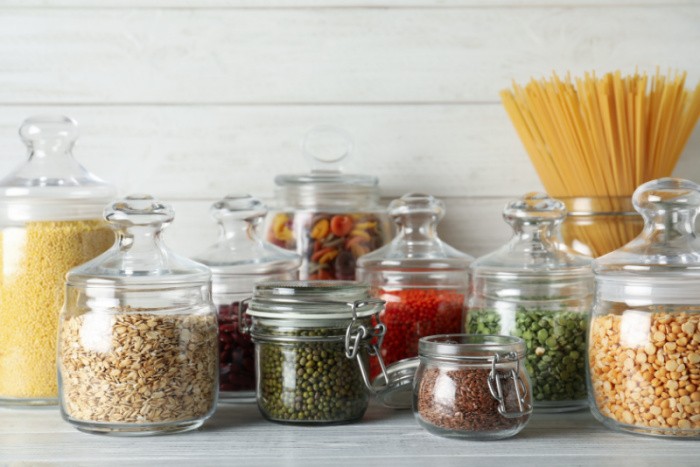













Things are failing and not much is being done about it. From food to fuel to manufacturers moving overseas because of labor shortages.
Almost everything is one event away from stopping, collapsing or temporarily shutting down.
One of my sayings is that “Change Requires Discomfort” and unfortunately it might just take that to accomplish what is needed to shore up and repair the systems.
Seems the only thing not in shortage is politics
Hi Matt, great comment as always. I like that “Change Requires Discomfort”! Good one! I’ll be glad when the political commercials end. Hang on for the ride. Linda
Matt: You last sentence is GENIUS! LOVE IT! JOYCE S.
Hi Joyce, I totally agree! Linda
I went to Costco yesterday (Oct 31, 2022) and a two-pack of 1.25 pounds of ground turkey was $17!!!!!!!!!!!! It must have been from super special magical turkeys! I couldn’t believe that price. I know everything is up, but it may just be time to cut back to one meal a day! We economize where we can, but this is just stupid.
Hi Jeanne, oh my gosh, I love your comment! Thank you for letting us know about the high price of ground turkey. I got the giggles over we may have to cut back to one meal a day. Funny, not funny. I think you may be right!!!! Linda
Good Morning Linda. Don’t know now much you have been following the Disel shortage and Railroad strike issues of the past couple of weeks, but if both happen, that will shut down all deliveries come the 19th and 21st of this month. I’m hoping both of these get settled before then, but I’m preparing just in case.
Also, the shortage of turkeys and chickens due to the now going on bird flu. They are saying, if you plan on serving Turkey for the holidays, now is the time to buy them. I was at Walmart yesterday, and there were very few turkeys for sale. Seems they are stocking up on ham though. I’m also seeing, as you probably are, a lot of empty spaces in the stores I shop at. May God Bless us All!
Hi Pam, yes I have heard about the diesel shortages and Railroad strikes. I need to run to Walmart and see if they have any turkeys left. That was the best price that I looked at online. They say the same price as yesterday but not sure what is left. Butterball and Jennie-O. Let’s pray the issue on the Railroad and diesel gets settled ASAP. Linda
Up until this week, I haven’t seen many shortages. This week, I got a surprise. I make soap, so I don’t use those products. I use microfiber and have a bidet, so I never noticed those. I don’t eat pork, and only use local beef, so I never noticed those. Ohio apples have been terrific this year. I make my own bread, so I never noticed that. I went into the store today, and paid 88 cents for tomato paste. There were few things of pasta. I was actually shocked. Glad we are stocked up.
Hi Janet, thanks for the heads up on your location. You are so lucky to find local beef. Great comment as always, my friend. Linda
.My family worked in farm production locally, and trucking industry. Those men are gone now. Each from their field of labor, gave me insights as to how fragile the farm production CAN be,because of the many factors affecting production and harvest. ..that is only the beginning of food coming to our tables.
Linda has addressed the many steps.Trucking affects our food availability and production several times for each food. Fertilizers- same,,water/drought/flood- same. What ever can go wrong?? Our time to fix production problem for this year is PAST- in my area growing season is gone.
How long you stock for needs to be determined by WHEN you will have production in your garden/grow area.
When you stock seed, make sure you have products to protect those plants from extreme temp changes and intensity from the sun. Study saving seed. practice it now. slice a tomato and plant the slice.learn to divide the plants out that are produced. One learns with practice.
Do you have sufficient growing medium to start plants? do you know which fertilizers and how much to use for each type you wish to have?
also all medication you use for every medical issue you normally experience- URI,UTI, wound care are 3 most common. common wound wash is saline solution. do you have distilled water and plain salt to make it- and know how.? Big family homestead had video out yesterday on how to do it. use every resource for your learning. take care of yourselves. The helping hand is on the end of YOUR arm… was a saying i grew up with- another way of saying you are on your own. No one si coming to assist.
Hi Denise, we all have to take care of ourselves, that’s for sure. Linda
I guess we are just plain blessed! I received 3 bonus (free) essential oils from the company I use. I am allergic to all 3 of the bonuses, so traded them for grass-fed ground beef from my organic farmer friends. We got 7 lbs. basically for free!! THEN, I drove up to our organic orchardist friends and bought apples, but one bushel was not what I had asked for. My organic farmer friend wanted the apples, so she paid me in part cash and part extra beef! In the end, we paid $17.50 for TEN POUNDS of gras-fed ground beef that tastes so yummy! I made barbecue beef sandwhiches last night and am freeze-drying some today, so we can put it in our “stocked up larder”! TRY BARTERING WITH LOCAL FARMERS!! It may become a win-win for you!! Good practice for SHTF situations, too. We are so grateful to be friends with these farmers!!!
Hi Joyce, you are truly blessed! I need to go check out some local farmers. The barbecue sandwiches sound yummy! That’s $1.75 a pound, unbelievable, I LOVE hearing about stuff like this!!! Great reminder about local farmers!!! Linda
I too am blessed. I will have a half a beef grown by a organic farmer friend and a organic whole pig soon. My friend knows a family that are raising organic pigs for 4h and they bought several extra and they will sell me one I can get them butchered at a School near where the kids who will show the pig for a very minimum price so they can teach the kids how to become butchers. We also had a goat given to us this past summer by my daughters boss (It’s nice to know people in the Police department) and the friend we are getting the 1/2 cow from gave us1/4 of a cow ground into hamburger. I am looking for someone who raises chickens and turkeys now.
HI Jackie, oh my gosh, that truly is a blessing!! What a great skill for the school and the 4H group to learn! I love hearing stuff like this!! Linda
I started several years ago curing and smoking my own Pork Bellies to make bacon and I’m telling you what a difference. I will now never buy store bought bacon again. We live on a few acres of land so we started raising Chickens with my grand daughter and her husband. We now have 70 plus chickens so were pretty well set on the fresh meat and eggs. We also have ducks and a few turkeys. We currently sell the eggs for $5.00 a dozen and duck eggs for $8.00 per dozen. We purchased some pigs and currently have 18 so I’m set on fresh pork bellies and pork chops. We also have 7 Goats and are planning on making some cheese. We have not messed with any Beef Cattle but maybe one day we will. Any of our animals we harvest any excess is shared with family and close friends. I will also pressure can any extra boneless meats for longer term food storage.
HI Chuck, oh, I LOVE LOVE LOVE your comment! Having a few acres of land would be so awesome. The bonus is having your granddaughter and her husband working together. What a blessing! What kind of smoker would you recommend to smoke the pot bellies? Oh, I want to learn how to cure and smoke my own bacon. Being able to sell what you raise is a blessing to you and to those who can purchase them. Love this!!! Linda
Hi Linda! I went to my local Aldi this morning and there were many empty shelves. A couple of employees were stocking them, but when people asked for various items, they were told the trucks hadn’t come in yet. I later went to my Dillons store (Kroger) to look for a turkey since Aldi was out. They had a few but they were $3.79 a pound! That’s no typo! So I will try Walmart tomorrow. Might need to get the son busy hunting! As for drought, our soybeans only made 6 bushels an acre this year. Thankfully we bought crop insurance this time!
Hi Paula, wow, $3.79 a pound???? Oh my gosh!!! I’m sorry to hear about your soybeans! I’m glad you bought crop insurance!! Linda
Walmart came through for me yesterday. Turkey was 99 cents a pound! Yay!
Paula, woohoo! Good to hear!!! That was the cheapest place I found as well! Linda
I was thoroughly disgusted yesterday at a regular grocery store when I just wanted to pick up a small bag of cornmeal to use until I do my big stock up. First of all it took forever to find any, then all that was available was a “premium” brand at a ridiculous price. It was a busy day with lots of walking already and I didn’t have time or energy to go searching at another store so I went home without any. There was a definite shortage of other grain products as well, other than this same over-priced brand. I remember there always used to be stacks of store brand barley, split peas, corn meal and similar items but definitely not any more. If you’re lucky there will be a selection in a bulk bin area but there seems to be less and less of what I consider basic ingredients and more and more prepared food items in many supermarkets.
Hi Alice, I will have to check the grain, barley, split peas, and cornmeal section when I go again. Thanks for the heads up. This helps all of us. It’s so hard when we need something and can’t find it. Or the price is ridiculous! Crazy!!! Linda
If you are worried about shortages of beef, pork or poultry, check out this website https://www.eatwild.com/products/index.html It is a clearing house listing farmers all over the country that sell their products. If you can’t find a farm near you, there are places that ship. I’ve been trying to get the money together to buy a half cow, however, it never seems to be a priority. Maybe this is the year to make it a priority, plus with both girls grown and gone (or almost gone) we only need a quarter cow now.
On the topic of reusable menstrual pads, for those of you who need them and do not sew, there are lots available for sale on Amazon. I used Glad Rags and can say that they last for years, I used the same supply for the last 20+ years I needed them. My oldest daughter uses a menstrual cup, even when working or out and about. Plus now there are underwear that are designed to be used when you are having your period and don’t need the reusable or disposable pads. So many “paper free” options are available today.
Hi Topaz, thank you for the link to the meat farmers list!!!!!! Love it. I think more and more girls or women will need to go to reusable menstrual items. The money saved is what it’s all about. Great comment, thank you! Linda
Something I need to talk about is the govt regulation that has made it ‘harder’ for big companies to raise chickens and pigs, for cheap (?). When I first moved rural, I got 4 old scraggly hens from an old lady as she was moving into town. She said to not expect much for egg production as they were about 8 years old or more. This was fine with me as I wanted them for Bug control! I had millions of boxelder bugs and those wierd fake ladybugs. This was in October right after I got my house finished. I quick threw up a tiny shelter for them, and they went right to work gobbling up the bugs. Lol, they’d each give me an egg about every 3rd or 4th day. Sadly, 2 passed away over the winter but 2 made it, probably due to the heat light I put in. I knew I’d need more adult chickens that next spring, as I planned to start a garden. Started looking…I found an egg production farm a couple hours north of me. Huge, big place! I had nothing to lose by asking so I stopped in, asked if they ever sold a few of their older hens. Sure, they could: $2 each for 5 of them. Again, they said to not expect much egg production but I explained I wanted Bug control. As one went to get the hens, I had a great conversation with these people. They had huge barns, incredibly clean, with chicken doors leading to the fenced pasture land. About 80 acres? Over a lot of this they had netting to protect against hawks and eagles. I was impressed, told them about the chicken farms I’d seen in other places: dark, filthy, the chicken ‘run’ area gave each chicken maybe a foot or two to move. These people said that kind of egg production or chicken raising Never made sense to them: in those conditions, an egg layer lives only about 1-2 years after starting to lay. These people’s hens were laying daily eggs until well over 5yrs old. Never had any diseases come thru that decimated their flock. The healthier the hen from good care made a difference. They dried and sold the chicken poop for fertilizer. Once the hens got about 8, they sold these to a place that made chicken broth. Every so often they set aside some of the acreage, had it farmed for wheat and rye, even alfalfa. Yep, a lot of their feed grown right there! Now, this place produces thousands of eggs each year. Very profitable.
When I later started raising meat chickens (as well as young layers), I kept this place in mind for how I treated my chickens. My butchering chickens happily grew to be about 9-12 lbs (after butchering, dressed out), in only 10 weeks. Very little fat thanks to them running around the yard eating bugs, kitchen leftovers. I bought Little feed for them. They preferred bugs, grubs, worms and even a few snakes. And, yes, I had chicken poop to compost for my acid-loving veggies. My egg layers also did very well and produced until about 8 or more yrs old.
It is corporate stupidity that starts govt regulation, not just a bleeding heart. Oh, and I’m a bit of that too as I learned how funny, smart are chickens. I’m off my soapbox now, lol.
Hi Wendy, great soapbox! I loved learning how you got started with chickens!! Thank you for sharing. Love it! Linda
It’s now 2025 and things haven’t really improved as far as groceries are concerned. I’ve started baking my own bread, hamburger/hotdog buns, and what few sweets I eat. I’ve also been making my own cereal. Found a healthy granola recipe I like. I’ve determined I need to purchase a small freezer this year to put my baked goods in since there’s no preservatives in them and sometimes what is out gets little green fuzzy spots because I don’t eat it fast enough, lol. I’m also going to start making my own pasta, English muffins, and cinnamon rolls. As to meat, I’m a cow lover (hamburger), but I’ve been reduced to chicken (which I don’t care for) or nothing at all. I’m eating a lot of fresh veggies and a little fruit. Eggs are starting to be regulated where you can only buy so many. I go through 3 18-count cartons a month of the XL. I’m almost to the point of not buying. Because I live on below poverty income, I do qualify for SNAP but am very careful on what I purchase because I don’t get that much and it’s usually gone by the middle of the month because I try to get what I need for a whole month. And, no, I don’t buy sodas, junk food, or highly processed food. I cook all my meals and the last time I ate out was 2 years ago. I’m hoping prices will start to go down but I’m feeling it’s not going to be anytime soon so I’ll just hang in there and keep learning how to make things. Have a Great Day!
Hi Pam, you are not alone my sweet friend. I do not know how people are feeding their families. We haven’t purchased meat for over a year. Yesterday, Mark found a pork tenderloin and bought one because we could get one free. I’m not that fond of pork but I will make pulled pork with BBQ sauce or something. Meat is way too expensive for my budget. We are using our freeze dried meat which is fine but not that great. Even being on SNAP the amount you get for one person is not enough. I’m not asking you to tell us what you get each month but I told my daughter years ago to check on because the job she worked in closed abruptly. It was not very much. Eating out is minimal for us. If we go out with friends once or twice a month, we never buy a soda and get the kids/senior meal to save money. I wonder if you have a food bank near you, that would help. See if your local grocery store has a time set for putting out almost expired meat. Freeze it. I hear you on the loaves of bread, no preservatives, I make small loaves for that very reason. Linda
Hi Linda. Not a problem on SNAP. I get, right now, $211.00 a month. It’s based on your income, which is my SS. Every time SS gives you a cost of living raise (joke), your SNAP goes down about the same amount. Yes, tell your daughter to see if she qualifies. I’ve just reapplied so don’t know what my new amount will be in April. Yes, Safeway always has a small area of soon to expire meat, but I’m not in the store often and normally forget to look there, lol. Unfortunately, I’m a picky eater so my food choices are getting harder to purchase but, I’m learning to make do. Thank goodness I eat Mediterranean and love most veggies. Trust me, there are some that will never cross my lips. Technically, I feel very fortunate for all that I have and do quite well on what I receive. I know there are many making do with far less. Just hoping prices go down at some point so things can be affordable again for everyone.
Hi Pam, that money is a blessing, I’m glad you get it. I love veggies, I could be a vegetarian easily, my husband loves meat! LOL! I’m hoping prices go down, but we have to be prepared that they will not. Some of us can grow a garden, many cannot. It’s life. You are blessed you can make bread, hamburger and hot dog buns. Yummy! That’s a huge savings in itself. Linda
I love meat too, especially cow. I do treat myself to hamburger now and then so I don’t go into withdrawals like I did when I couldn’t get my Blue Bell ice cream. That was really a rough time, lol. I try to garden, but at my altitude it’s almost impossible not to mention a short growing season. I feel we have 7 months of winter, 1 month of spring and 2 months each of summer and fall, if we are lucky. Oh well, I keep on trying.
Hi Pam, I would find a Farmer’s Market that uses green houses, possibly. I remember the Blue Bell Ice Cream!! We all need a hamburger once in a while, we have In N Out Burger which is popular in Utah! Linda
Linda, one of your best articles ever. Regarding egg prices. In the past two years millions of chickens have been slaughtered due to bird flu hysteria and real infections. That problem will continue to worsen now that humans, cattle and other species are known to have become infected.
It’s a really good time to have your own chickens. But if you don’t or can’t have your own chickens you can still buy eggs from locals who do. Generally they cost less than at the store. Around here locals sell fresh eggs with the bloom still on them for $4-$5 per dozen.
And everyone should be finding local ranchers for beef, lamb and pork. Buying local is better for your health, the environment and often times your pocketbook.
And it’s never too late to take up hunting, fishing and gardening.
Hi Ray, thank you for your kind words, my sweet friend. You are blessed to have chickens, my neighbors has some, I love hearing them. One thinks its a rooster and its not. LOL! I’m glad we have a lot of freeze-dried food we are living off of it. The bird flu is awful for farmers and ranchers and now I heard a human died from it in Louisiana. If everyone could have a garden and be able to buy some meat from a local farmer that would be awesome. Linda
Smithfield Foods is owned by Chinese – there are 5 Chinese on the board. The following is a list of companies owned under the banner of Smithfield Foods:
SMITHFIELD FOODS (OWNED BY CHINESE)
Eckrich, Nathan’s, Farmer John, Farmland, Armour, Carando, Cooks, Curly’s, Gwaltney, John Morrell, Kretschmar, Margherita, Smithfield Culinary
I am not familiar with all those above listed “companies” as some may be regional. Frankly, I will purchase locally!! A google search of the company Smithfield Foods then look for the Board of Directors: https://investors.smithfieldfoods.com/corporate-governance/board-of-directors
I am fortunate in that my daughter and son-in-law have a good sized flock of chickens for eggs (to eat and sell) and they raise a flock of meat chickens in the spring. I get all my eggs and chicken meat for watching the kids now and then!! I don’t eat a lot of eggs – use mostly for baking so I am not needing more than a dozen a month.
I was in my Bible study this morning. We were studying the book of Ruth and talking about gleaning! One of the ladies has a large farm (wheat, barley, dried beans, corn) and I asked her if they ever had gleaners come to their farm. She said after the main harvest of each grain, there is always some left in the fields and they do allow people to come pick (didn’t say if they charge or not!! and I didn’t ask). So that might be an option if we live in areas where those types of grains are raised. I am going to suggest to my daughter that she and the kids talk to this lady for possibility of gleaning wheat especially. Since daughter bakes her own breads/pastries, that might be a way for them to get fresh wheat yearly to grind for baking. Never hurts to ask!!
I have been investing a bit of $$ into Wyoming Goldbacks and found that there are several stores here in the town I live who take the Goldbacks so I might visit a local meat market to see if I can use one or two of my Goldbacks for meat for my freezer.
I do eat a lot of vegetarian meals to save money since meat is so expensive. I also don’t buy sodas or junk foods – well, I shouldn’t say I don’t but need to clarify that it is so so rare!! Popcorn is my go-to snack food anyway.
Hi Leanne, I had heard the Chinese bought a lot of land and purchased so many companies, dang it. I remember gleaning fruit trees for the fruit that was left on the trees. Or the ground, if it was bumper crop. I do remember reading about the Smithfield company. Life changes, hopefully, more positive moves are coming soon. Linda
Oh Linda. It just never ends does it?
We sent the grandson off to the local community college with as much as we’ve been able to do for the food pantry there. (3 bags & 3 flat boxes)
We primarily shop loss leaders & items I’ve got paper coupons or Ecoupons for. Thank goodness for Thrive! We watch the prices, primarily ground beef, ground sausage, and maybe blueberries. Miss out on the Black Friday sale as we don’t have a “local” person.
We’ve tried to explain to neighbors that we are quite literally at the end of a food chain here. WalMart, Fry’s, Safeway, and Target are our local stores. All are small stores certainly not the big “Super” or “Marketplace” size places.
We stock up on what we can and just make do. We’ve owned the same car for 17 years, we are both retired so income doesn’t change, and we wear the same clothes we’ve worn for years (but even blue jeans break down after 20 years or so!). We have an excellent library here, and so far we can still afford cable television. (but NO streaming or internet needed for the shows we watch) Haven’t been in a movie theater in years and quite content. (Hubby loves to tell people the last movie we went to was “Home Alone”!) I can survive quite nicely reading my stash of books while Hubby watches yet another “Gunsmoke” or “Cheyenne”.
I suppose we all just have to grow up and deal with things as they come along!
Thank you for all you do for us!
Cheryl
Hi Cheryl, oh my gosh, I love your husbands comment the last show was “Home Alone”! I have the giggles, I love this! I can’t even remember the last theater show I went to!! LOL! Clothes do wear out, I broke down last year and bought a few tops and capris all black, after working so many years I don’t want to choose what to put together. Black tops, black jacks, and black pants and capris. It works for me. LOL! As far as streaming, good grief, Netflix is all we have, I love it because I watch movies every day. I refuse to pay for any other streaming. We do have cable because Mark has to see his sports channels. At our age, its all good. We are living off our food storage with the exception of milk and bananas each week. I grow lettuce indoors. Our car is a 2009 Honda CRV, we only have one car. Our retirement is not what we had anticipated. The build of this new house was way too expensive for what we got. But our daughter and her husband were in charge and we footed more than half the cost. There are no words to describe the situation. We never should have moved here. But I’m 75 and Mark will be 79, we pray every day that things will improve. I believe it will, we must have hope. Linda